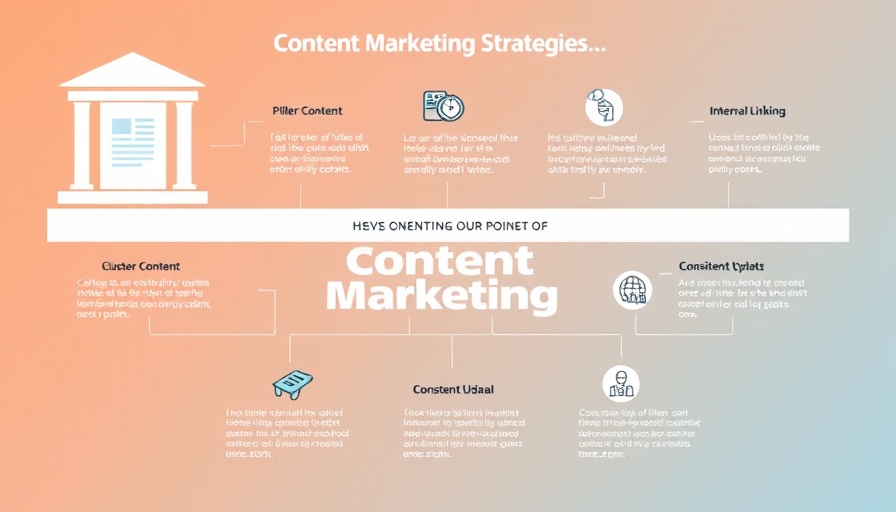
Unlocking the Power of a Content Hub
Creating a content hub isn’t just a trend; it’s rapidly becoming a necessity for businesses looking to flourish in the competitive digital marketplace. Imagine having an online destination filled with rich, engaging content that speaks directly to your target audience’s needs—this is exactly what a content hub can achieve. By effectively leveraging a content hub, businesses can enhance their visibility, cultivate customer loyalty, and drive substantial traffic to their sites, sometimes even by as much as 300%.
Why Content Hubs Drive Increased Traffic
At the heart of a successful content hub is an understanding of customer intent and behavior. By developing a centralized location for all relevant content—be it blogs, videos, e-books, or infographics—businesses educate their audience while establishing authority in their niche. This strategic approach not only reinforces brand messaging but also cultivates trust, leading to longer user engagement on your site.
Building Your Content Hub: The Essentials
So, how can you build a content hub that actively drives traffic? The first step involves a comprehensive content strategy. This means conducting a thorough keyword research analysis to ensure that the content produced resonates with what your targeted audience is searching for. Incorporating LSI (Latent Semantic Indexing) keywords related to your main topics not only helps in SEO but also improves the clarity and relevance of your content.
Leveraging SEO for Maximum Visibility
Search Engine Optimization (SEO) is a vital component of your content hub. Utilizing techniques like backlinking and internal linking can improve your site’s credibility. Regularly updated content with high-quality images and optimized titles can boost your rankings. Moreover, staying updated with search engine algorithm changes allows companies to tweak their strategies effectively, ensuring they remain visible in search results.
Utilizing Analytics Tools for Performance Insights
Once your content hub is live, it’s crucial to monitor its performance through analytics tools. Google Analytics and other similar platforms help assess visitor behavior, source of traffic, and content effectiveness, enabling businesses to adjust their strategy in real time. For example, if a certain type of post consistently resonates more with your audience, consider enhancing that content type to attract even more visitors.
Content Hub as a Vehicle for Brand Storytelling
In the digital age, storytelling is an effective way to create emotional connections with customers. A content hub can become a canvas where your brand’s journey is depicted—its values, mission, and innovations. Incorporating stories, testimonials, and case studies into the content hub not only humanizes your brand but also encourages user engagement. Sharing authentic content helps customers feel a sense of belonging, fostering loyalty.
Social Media Integration: Expanding Reach
Integrating social media into your content hub strategy magnifies reach and engagement. Share snippets of content on platforms like Instagram, Facebook, and LinkedIn to draw users back to your hub. Moreover, using tools for social media advertising can promote your hub's content to a broader audience. This cross-channel strategy expands visibility and feeds directly into the user journey, potentially increasing conversion rates.
Future Trends: Embracing New Approaches
Looking ahead, emerging technologies and consumer behavior trends will shape how content hubs evolve. Expect to see a greater emphasis on personalization, where visitors can enjoy tailored content experiences. Additionally, AI in digital marketing can transform how businesses engage with customers, making content delivery more effective and timely.
In conclusion, building a well-structured content hub is essential for driving significant traffic and establishing your brand’s presence in an oversaturated market. By understanding user needs, leveraging analytics, and staying attuned to digital marketing trends, businesses can create a compelling hub that serves both the audience and the brand's goals. So, are you ready to build yours and elevate your marketing strategy to the next level?
 Add Row
Add Row  Add
Add 




Write A Comment